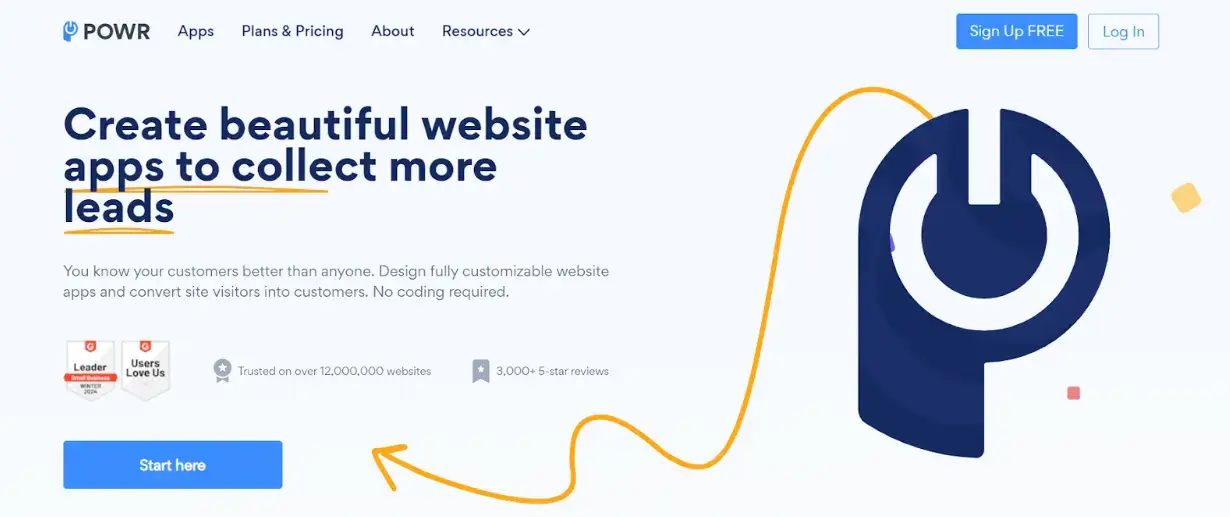You see tons of traffic on your mobile site, but the engagement and conversion rates could be much higher. If you're looking to grab the attention of quick-scrolling mobile users and turn them into paying customers, you've come to the right place.
In this article, you will learn mobile marketing strategies to transform your mobile marketing into a core business strength that consistently delivers high ROI.
As you review these ten strategies, ask yourself, “How can I tailor each strategy specifically to my audience?” It will help you improve engagement and increase the relevance of your messages.
1. Short Videos, Big Results
Videos under 2 minutes get the most engagement, so make sure your mobile videos are short. Adding short videos on your landing pages can increase conversions by over 80%.
Use TikTok and Instagram Reels for mobile marketing because they have billions of monthly active users worldwide.
-
Optimize for silent viewing
Many users watch videos without sound, especially in public spaces. Include captions or on-screen text so the reader understands your message without audio.
A standout example is Breaking Eighty, a website for golf product reviews. They optimize their social videos for silent viewing by incorporating on-screen text.
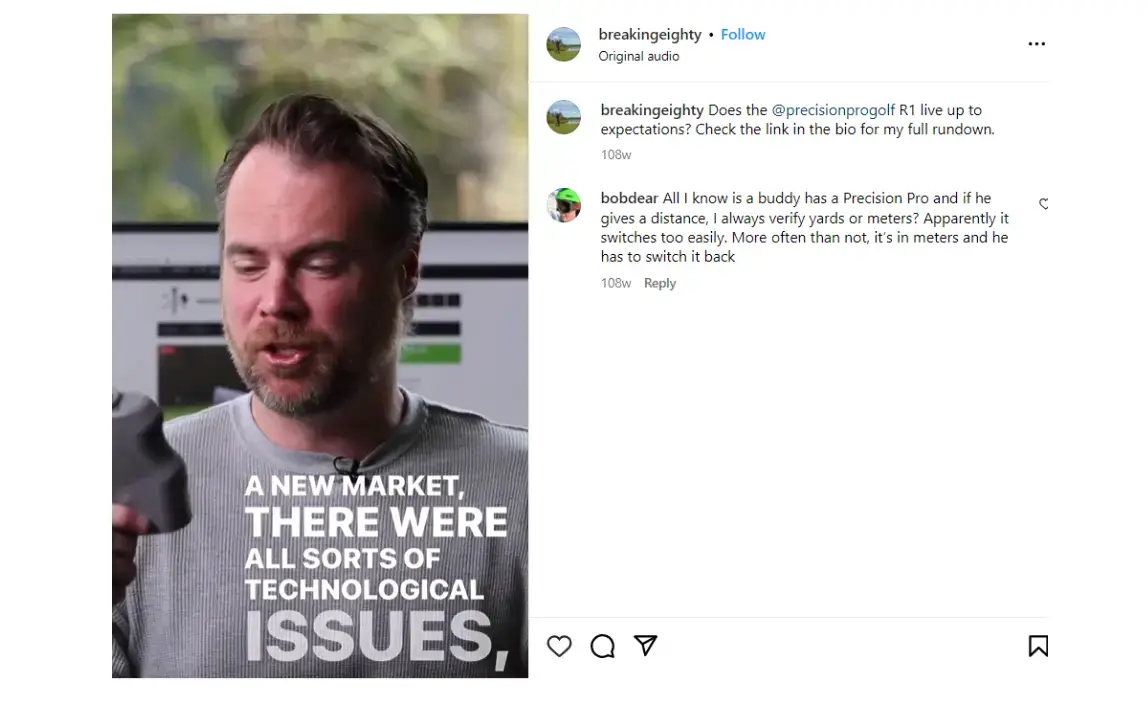
Source: Instagram
-
Use strong CTAs (Calls-To-Action)
End your video content with a clear, compelling CTA (call-to-action). For example, if you want your prospects to sign up for a newsletter about eCommerce trends, use the CTA, “Stay ahead! Subscribe now for exclusive eCommerce trends”.
Similarly, If you are a restaurant owner, encourage customers to visit your website with a CTA like "Explore our latest menu and promotions online!"
-
Test different formats & styles
Experiment with different video styles to see what resonates with your audience. Here are the five popular video formats that you can experiment with:
-
- Animated videos
- Tutorial or how-to
- Explainer videos
- Behind-the-scenes
- Short-form storytelling
Remember that trends can change quickly; what works today might not work tomorrow. So stay adaptable and innovative.
You can also hire a marketing intern to test different video formats. This way, you can save time and focus on other important aspects of your business.
Meanwhile, interns will explore what performs best so that you stay current with the latest trends without overspending so you can keep your content strategy fresh.
2. Voice Search: Quick Queries on the Go
50% of all searches will be voice-based by 2025. With the rise of smart speakers and voice-activated mobile assistants like Siri, Google Assistant, and Alexa, optimize for voice search to stay competitive.
Voice searches are 3x more likely to be local. People often use voice searches to find nearby businesses or get directions.
So, if your goal is to optimize your business for local searches, work on your voice search. Also, ensure your business is listed accurately on maps and local directories.
Similarly, use local keywords and phrases like "near me" or "close by" in your content.
-
Use natural language & long-tail keywords
Voice searches are more conversational than typed queries. Focus on long-tail keywords (longer, more specific search queries) and phrases that mimic how real people talk and ask questions, like saying, "coffee shops near me."
-
Create FAQ pages
Compile common questions customers might ask about your product or service and give clear, concise answers.
Make your FAQ page cater to conversational tone-of-voice queries to boost your voice search visibility.
-
Improve loading speed
Voice search favors fast-loading websites. Ensure your mobile site loads in less than 2 seconds, as users expect quick responses when asking questions.
Want to read more about loading speed? Check out these 10 tips to boost your site’s speed and performance.
3. Targeted Emails, Extensive Reach
Email marketing gives one of the highest returns on investment among other mobile marketing channels. You can expect an average return of $42 for every dollar you spend on email marketing.
Emails are also more personalized based on the data you collect from your subscribers. For example, you can address customers by name or send targeted mobile marketing campaigns based on user behavior.
Follow these two steps to create an effective mobile email marketing campaign:
-
Build & segment your list
Start by building an email list through sign-ups on your website, blog, and social media platforms.
For example, use an engaging popup to get users to subscribe. POWR has an exit-intent popup for $0.
For example, this website selling Greenhouse Kits uses a fullscreen pop-up that entices visitors to subscribe. They use a clean, prominent, green-colored "Subscribe" button to draw attention.
Additionally, they include a "No Thanks" button for users to dismiss the pop-up quickly if they're not interested.
This approach maintains a positive user experience and grows your subscriber list.
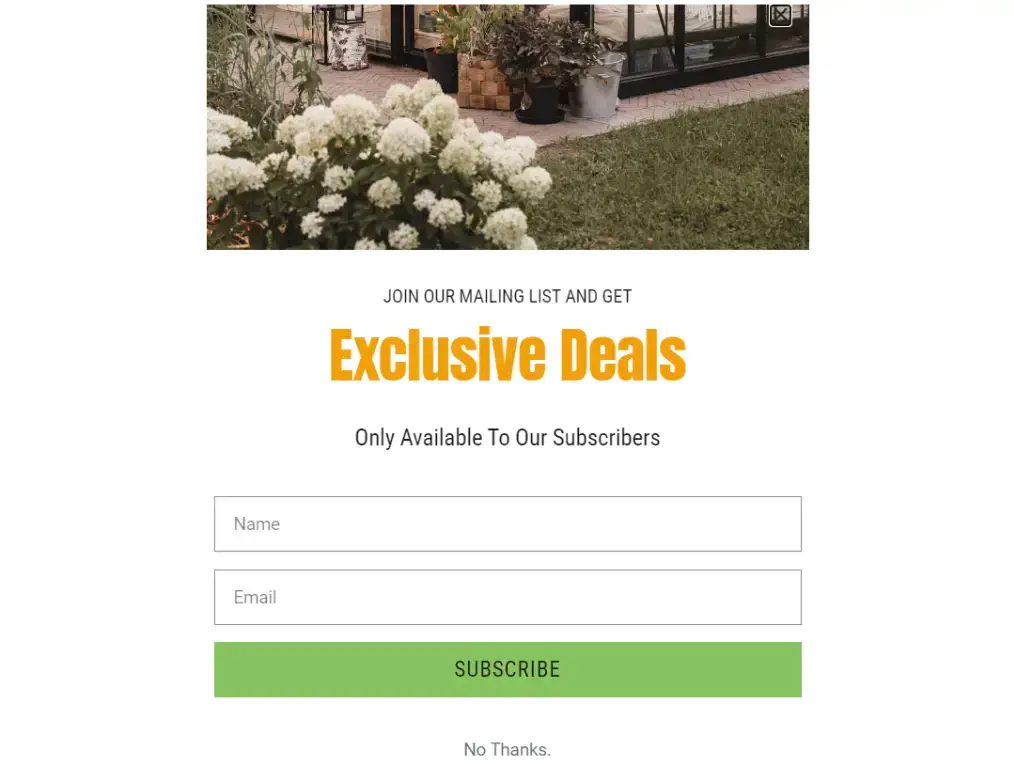
Once you have built your list, segment your subscribers based on their:
-
- Behaviors like purchase history, email open rates, click-through rates, and navigation patterns.
- Content preferences like tutorials, product updates, news and communication frequency.
- Demographics like age, gender, location, education level, and income bracket.
-
Design for mobile
Ensure your email designs are responsive and look good on all devices. To achieve this:
-
- Use easily clickable buttons of 44x44 pixels.
- Make sure your images take less than 2 seconds to load.
- Use a readable font size of 16 pixels for body text and 22 for headings.
4. Hit The Mark With SMS Deals
Since texts have an open rate of 98% compared to 20% for emails, SMS is a highly effective channel to reach your audience.
SMS ensures people see your message almost immediately, which is especially crucial for time-sensitive information, whether an urgent promotion or a timely update.
These three steps explain how you can create an effective SMS mobile marketing campaign:
-
Get permission
Always get explicit consent from users before sending SMS messages to comply with legal requirements and build trust with your audience.
For example, when users purchase, provide a checkbox option explicitly stating they agree to receive SMS messages.
-
Keep it short & sweet
SMS is best for concise, clear messages. Make sure your texts communicate the message in 160 characters.
-
Timing is key
Consider the timing of your messages: avoid early mornings or late nights, and aim for times when recipients are more likely to act on your message.
For example, a restaurant can send a lunchtime promotion around 10:00 AM when people think about lunch plans.
5. Quick Checkouts, Fewer Abandoned Carts
With over 50% of online transactions now happening on mobile devices, your checkout process should be intuitive enough to keep customers from dropping off at this critical stage.
Ensure you follow the four steps while crafting your mobile checkout page to maximize sales.
-
Minimize steps
Aim for no more than three steps from cart to confirmation. Each additional step can increase the chances of cart abandonment by 22%.
-
Optimize form fields
Integrate innovative features that auto-detect text as the user types. For example, separating phone number segments or auto-capitalizing names.
-
Use a progress indicator
Include a progress bar or indicator at the top of the page so customers know how far they are in the process and how many steps are left.
-
Enable guest checkout
Don’t force mobile users to create an account to make a purchase. This way, you’ll significantly decrease cart abandonment rates.
6. Snap & Tap: QR Codes In Action
Today, users can instantly point their camera at a QR code to access a website, menu, or digital asset. For example, a QR code in a mobile ad can link to a webpage with a special promotion.
One notable example is Nike. They launched a QR code campaign in their stores that lets customers scan products for additional information and check stock availability.
It even lets customers place orders directly from their phone if their size is out of stock in-store. Follow the three key considerations while using OR codes:
-
Strategic placement
Place QR codes where they are easily noticed and can be scanned. For example, look for busy spots where people hang out, like waiting areas or restaurant tables.
-
Integrate with campaigns
Use QR codes as part of broader marketing campaigns. For instance, use a QR code on a poster to take prospects to your campaign-specific landing page.
-
Give clear instructions
Only some people know how to use QR codes; include brief instructions or prompts next to the code. It can be as simple as "Scan me with your smartphone camera to learn more!"
7. Snap, Post, Profit: Mobile Social Media Moves
Most social media activity happens on mobile devices. Use Facebook, Instagram, and Twitter to reach your audience with targeted mobile advertising.
Use Google Ads' mobile targeting to reach specific demographics, interests, and behaviors. These six strategies are a must to leverage social media for mobile marketing:
-
Use mobile-first formatting
Leverage formats designed for mobile engagement.
Use Facebook and Instagram Stories, which are full-screen and highly engaging, or TikTok videos, tailored for quick consumption and interaction.
-
Engage in real-time
Use live streaming, Q&A sessions, or behind-the-scenes looks on social platforms to engage audiences in real time.
Live content adds a human touch that can significantly boost engagement and reach. Starbucks engages with their audience through Instagram Stories.
They host Q&A sessions centered on uplifting topics, such as making someone's day. It invites followers to share heartwarming stories or kindness acts.
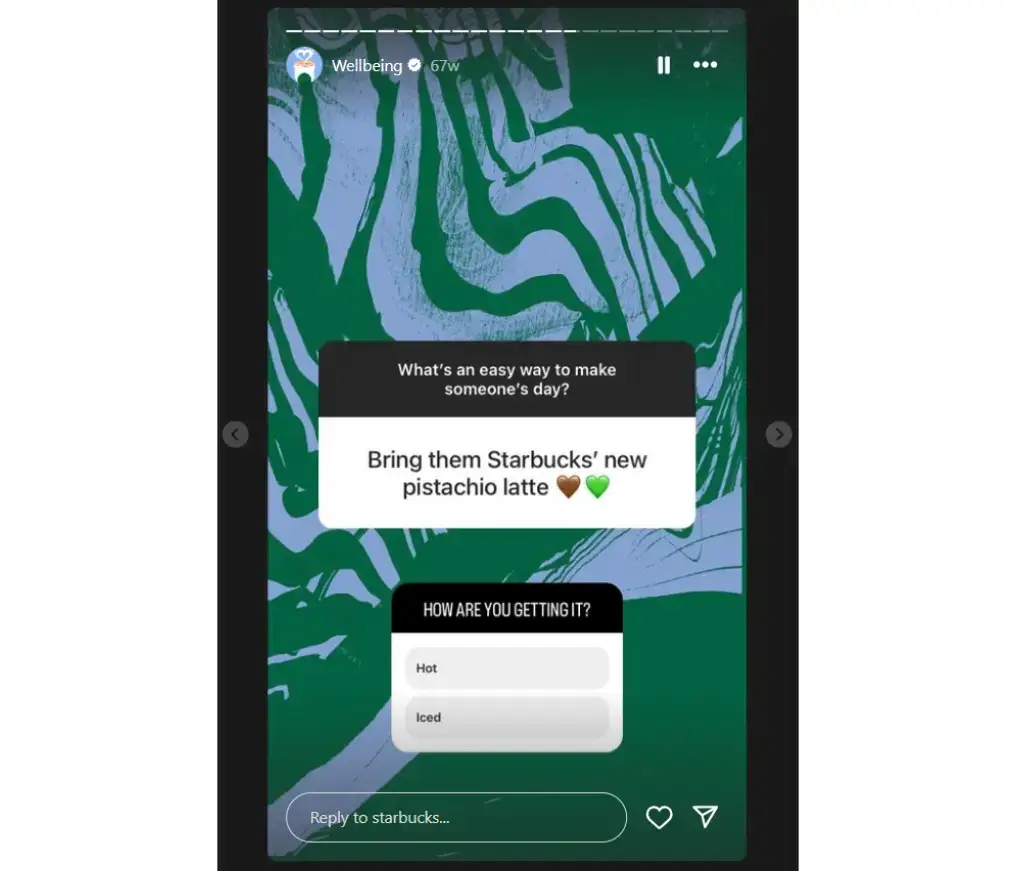
Source: Instagram
-
Implement mobile-friendly ads
Design your ads strategy with a focus on quick load times, minimum data usage, and high visibility on smaller screens.
Use call-to-action buttons that are easy to tap with a minimum size of 44x44 pixels.
-
Use Stories
Use Instagram, Snapchat, and Facebook's Stories feature to create timely content that disappears after 24 hours.
Stories are inherently mobile-friendly, designed for quick viewing and high engagement.
Encourage interaction through polls, quizzes, and swipe-up features to increase engagement directly from the mobile interface.
-
Augmented Reality (AR) filters
Create custom AR filters for Snapchat and Instagram so users can engage with your brand in a fun way.
A real-life example is Taco Bell’s AR mobile marketing campaign.
They created a Snapchat AR filter that turned users' heads into giant taco shells. This fun and engaging filter went viral, with over 100 million views in a single day.
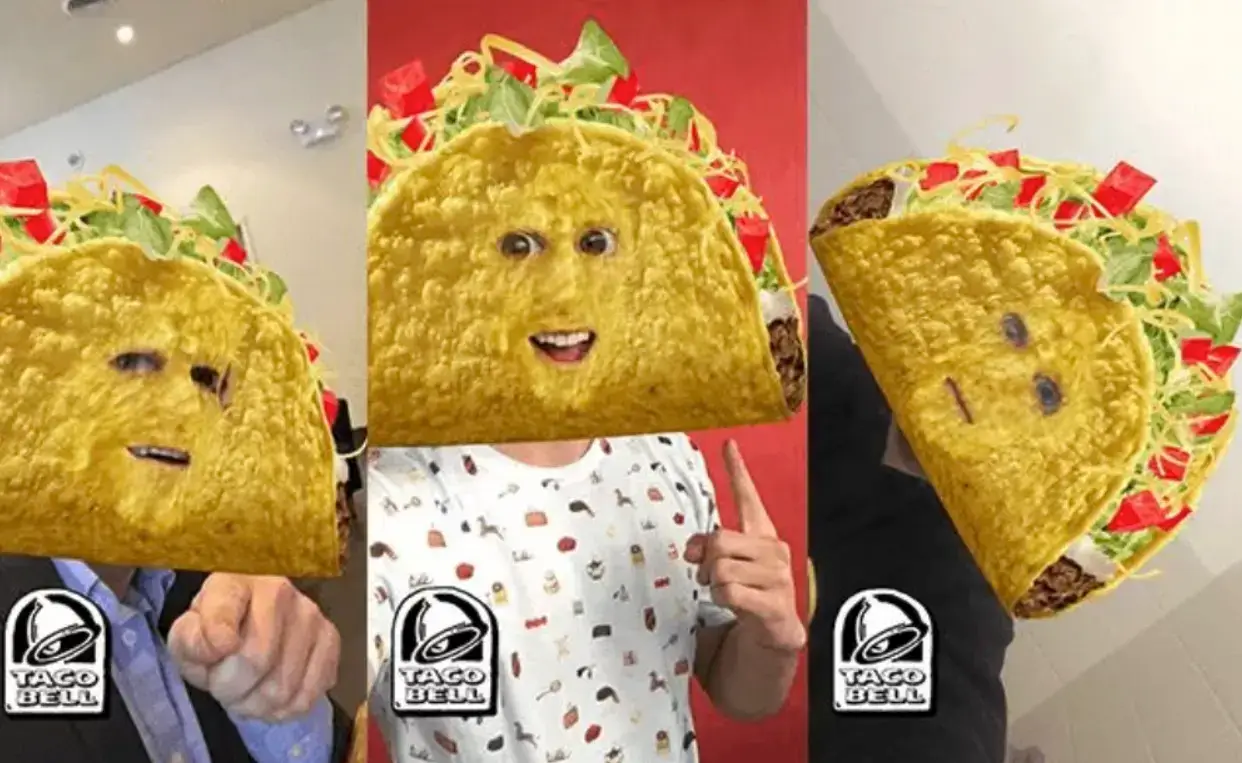
Source: NapoleonCat
-
Personalized content
Deliver content that resonates with your audience’s interests and behaviors on mobile. Use data analytics to track:
- Conversion rates
- Engagement rates
- Click-through rates
- Time spent on content
Analyze this data to identify patterns and preferences among different audience segments. Then, tailor content to meet the preferences of your segments.
For instance, create more video content if one segment engages more with videos.
8. Let Your Fans Do The Talking: Feature UGC
92% of consumers trust user-generated content (UGC) more than traditional advertising. You can get more organic reach with UGC because people share and comment more on user-generated posts.
For example, ads featuring UGC see a 4x higher click-through rate than non-UGC ads. These four steps will guide you to leverage UGC as a mobile marketing tool effectively:
-
Encourage content creation
Run contests and offer incentives to motivate your customers to create and share content. You can ask them to post their experiences using a specific hashtag.
-
Showcase UGC in your marketing
Integrate user-generated photos, videos, mobile ads, and reviews into your mobile site, app, and social media platforms.
An excellent example is Green Supply, a company specializing in wellness products. They actively leverage UGC by posting customer reviews on their Instagram stories and website.
They encourage customers to share their experiences using hashtags about their wellness products, such as #SelfCare, #GreenSupply, and #Health. It helps them collect more UGC and increases their social media visibility.
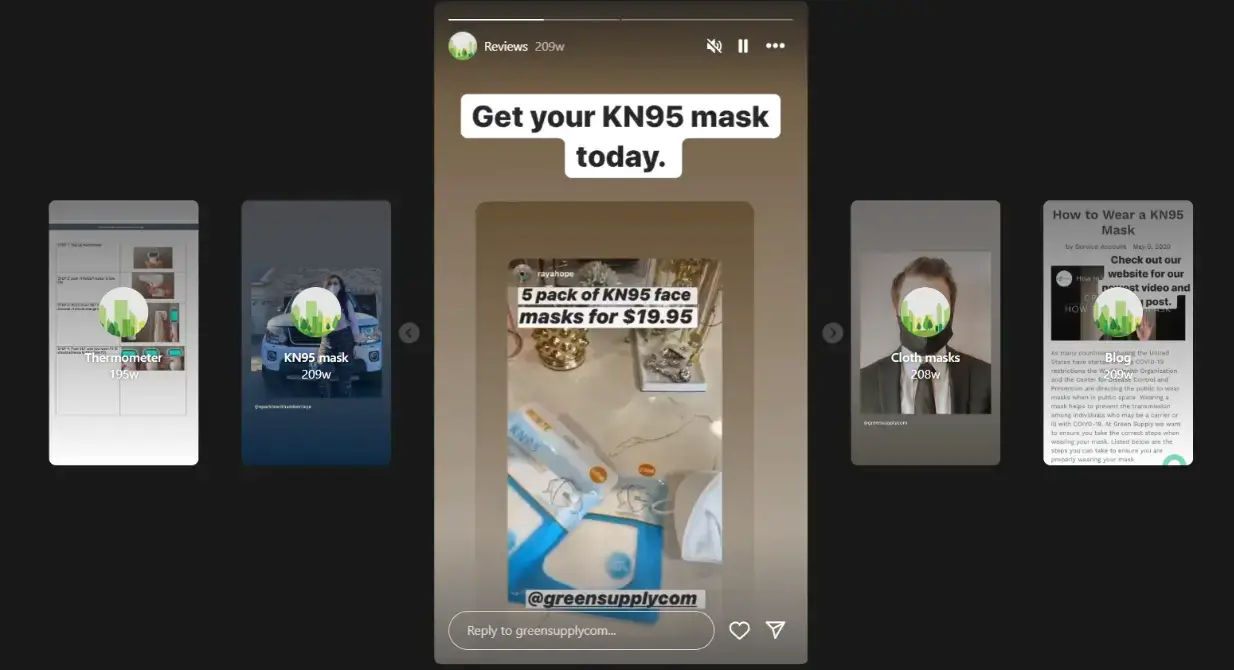
Source: Instagram
-
Create a UGC community
Build a community around your brand by actively engaging with users who post content.
Leave meaningful comments like "We love how you styled our product!". Avoid generic remarks like "Nice post!" or “Beautiful!”.
-
Implement hashtag campaigns
Create and promote a brand-specific hashtag that users can include in their posts. It helps organize and find content related to your brand.
A popular example is Nike's #JustDoIt hashtag. Customers worldwide use this hashtag to share their experiences with Nike products, whether it's their workouts, achievements, or new favorite Nike gear.
9. Smooth Moves: Streamline Your Mobile Navigation
If users can find what they need quickly, they’re more likely to purchase or follow through with a call to action. So, make your mobile website navigation intuitive and user-friendly.
- Invert colors to minimize eye strain.
- Read page option for visually impaired users.
- Contrast adjustments to enhance text and image visibility.
- Reading line feature to help users with reading disorders like dyslexia.
- Greyscale option to improve readability for users with visual impairments.
Here’s an excellent example from 3Wishes that includes app accessibility features to accommodate users with different needs:
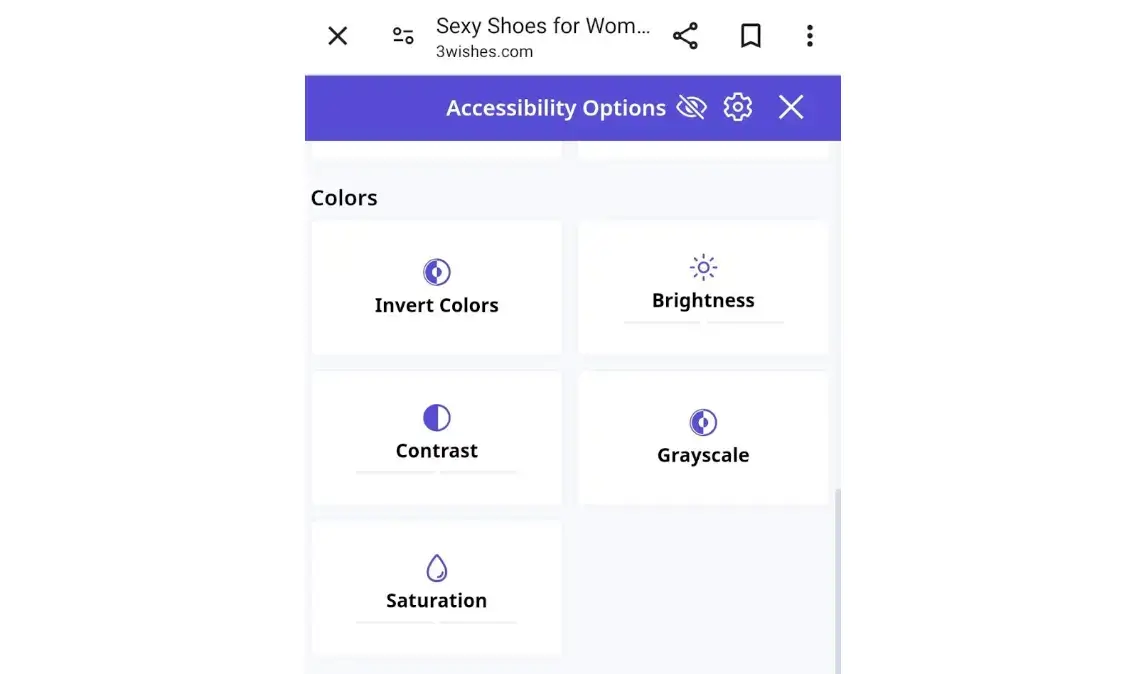
7 Ways to Make Mobile Navigation Easier
- Use distinct, easily clickable CTA buttons that stand out on the page.
- Place a prominent search bar on every page to help users find content quickly.
- Limit the use of pop-ups to avoid covering important content and frustrating users.
- Use a touch-friendly navigation menu like a hamburger menu for compact visibility.
- Design large buttons, personalized widgets, and user-friendly links that are easy to tap on.
- Keep navigation elements visible while scrolling to allow easy access to the menu at any time.
- Have a responsive website that adapts seamlessly to different screen sizes and orientations.
10. Drive More Deals With A Mobile App
With eCommerce sales through mobile devices expected to reach $2.5 trillion this year, you should create a dedicated app to boost your conversions.
Build a mobile app to boost your business’s mobile presence. If you decide to build your app, you have complete control over its functionality and user experience.
For example, if you're a restaurant owner, your custom app should include features like:
- Loyalty reward programs
- Real-time table reservations
- Push notifications to recommend personalized menu
However, developing an app from scratch is often more costly and time-consuming. It requires a dedicated team for development, maintenance, and regular updates.
You can use POWR to create website apps without coding to save time and expenses. You can create professional quality apps with POWR’s user-friendly interface.
All without having the technical programming knowledge.
Source: POWR


